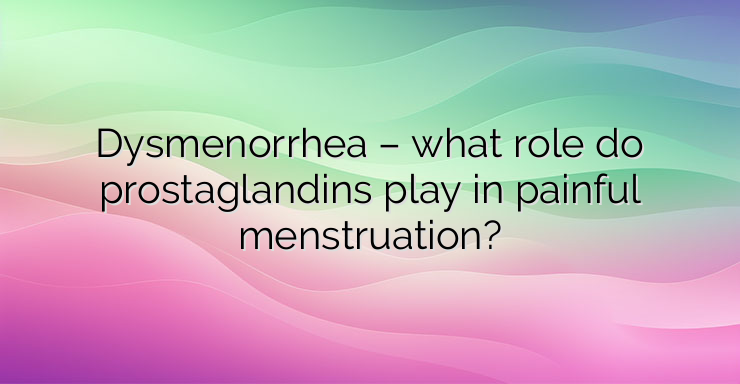Painful periods (dysmenorrhoea) tend to peak fairly soon after puberty, so if your periods become more painful as you age, you should see an OB-GYN. Dysmenorrhea is the term used to describe painful menstruation. Menstrual pain from the first period or shortly after and without a specific cause is known as primary dysmenorrhea. Menstrual pain caused by certain reproductive disorders, such as endometriosis, adenomyosis, or fibroids, is known as secondary dysmenorrhea. In primary dysmenorrhea, the uterine lining produces hormone-like substances (prostaglandins) that cause the muscles of the uterus to contract strongly, causing pain and reducing blood flow to the uterus. There are different types of prostaglandins produced throughout the body, but prostaglandin F2X is responsible for menstrual pain. Women of any age can report painful periods, and some women find that pain during menstrual bleeding lessens after pregnancy and childbirth. Symptoms of dysmenorrhea may include: Pain in the lower abdomen that may radiate to the lower back and legs; Pain that is gripping or experienced as a constant ache, or a combination of both. Pain usually starts on the first day of your period or earlier, and the first 24 hours may be the most painful. Dysmenorrhea can be associated with headache, nausea and vomiting, digestive problems (such as diarrhea or constipation), fainting. Other common symptoms are premenstrual complaints, such as tender breasts and a bloated belly, which can last throughout the period. Pain that persists beyond the first 24 hours usually tends to subside after two or three days. Causes of primary dysmenorrhea? Women with primary dysmenorrhea tend to have elevated levels of prostaglandins, which cause more intense uterine contractions than normal. The cause of elevated prostaglandins is unknown. What is the treatment for primary dysmenorrhea? Women with dysmenorrhea need a thorough medical examination to make sure that their menstrual pain is not caused by certain reproductive disorders such as endometriosis or fibroids. Treatment options for dysmenorrhea may include: Pain relievers such as paracetamol. Medicines that inhibit prostaglandins, such as ibuprofen or other anti-inflammatory medicines. Regular exercise and attention to overall physical fitness. Placing a hot water bottle on the abdomen, the heat relaxes the uterine muscles. Relaxation techniques. An oral combined contraceptive medication that reduces prostaglandins and therefore reduces pain. Causes of secondary dysmenorrhea? Some of the causes of secondary dysmenorrhea include: Endometriosis – the cells lining the uterus can move to other areas of the pelvis, but they act differently,causing severe pain during menstruation Fibroids – benign tumors made up of muscle and tissue that can grow inside the uterus and are thought to be affected by sex hormones. In the majority of women, fibroids are asymptomatic (do not cause symptoms) Adenomyosis – the presence of endometrial cells growing in the muscle layers of the uterus. Adenomyosis is difficult to treat. Sources: https://www.betterhealth.vic.gov.au/health/conditionsandtreatments/menstruation-pain-dysmenorrhoea https://www.healthnavigator.org.nz/health-az/d/dysmenorrhoea/


Leave a Reply